As we continue our sockeye salmon fishing series, it makes a lot of sense to talk about the different options you have when it comes to hooks. Much like other aspects of sockeye salmon fishing, some of this comes down to personal preference, but I’ll do my best to outline the common choices along with their benefits and drawbacks so that you can make an educated choice for yourself.
PART II – HOOK CHOICES
One of the most important choices in your sockeye fishing tool box is your hook, but far too many anglers overlook its importance and opt for the first cheap hook they find on the wall of the tackle store. That would be a huge mistake. Cheap hooks dull quickly, are composed of weak wire, and result in MANY lost sockeye! It may seem like you’re wasting a lot of money by purchasing more expensive hooks, but in reality you’re saving yourself time, anguish, and probably not losing money at all since better quality hooks last much longer than cheap ones.
Below are the most common options that are utilized when “flossing” sockeye on the Kenai River, along with some information about each of them:
Octopus Hook – These are the standard “J” hooks that are most common in sockeye fishing, and most fishing around the world. These are great hooks to use for sockeye salmon, most typically in the #2 to 3/0 size range, 2/0 being my most common selection. These hooks are easy to find, come in a wide variety of sizes, and will always work! Gamakatsu and Owner make the best Octopus-style hooks that I’m aware of, so try to stick with those brands and avoid getting frugal (aka cheap) by buying lesser quality.
Big River Bait Hook – The BRB hook has caught on big-time with salmon anglers over the past decade, especially in their application with plugs and spinners. But they also work well when fishing for sockeye. The shape of the bend allows the hook point to stick anything in its path, and they tend to hang on to fish very well. The eyelet of the hook doesn’t come off the shank in as steep of an angle as some other hooks, so pay attention to the knot that you tie. A snell-knot doesn’t seem to work as well as it would with a standard octopus style hook, so I’d recommend using a palomar knot or loop knot when fishing a BRB hook for sockeye.
Glo Bug Hook – If you survey sockeye anglers about the best size hook to use for sockeye, you’ll get a wide variety of answers. For those sockeye seekers that prefer a smaller hook, the glo-bug hook can be a killer. I wouldn’t use this hook during peak water flows on 2nd run Kenai sockeye, but I’ve personally witnessed them be deadly on first run Kenai sockeye and Kasilof sockeye alike! it feels a bit strange to tie a glo-bug hook onto a 30 pound monofilament leader, but don’t be afraid to try it when the conditions are right (i.e. lower flows).
Long Shank Hook – The old school Coho fly that many novice sockeye anglers are guilty of using is tied on a hook with a very long shank, so it stands to reason that a long-shanked hook should be in your arsenal. I’ve experimented with a few different types of hooks, and the baitholder has won me over time after time. The shank is long, but not too long, and they seem to be just the right gauge for penetrating and hanging onto a wild sockeye, even in heavy current. The eyelet of the hook is in the opposite direction of an octopus style hook, so pay attention to that when choosing a knot to tie. One of the benefits of these hooks is that they are a bit cheaper than most other options. Try them!
Circle Hook – When bait fishing in Florida and many other areas around the world, the circle hook is the most common choice, but its popularity in sockeye fishing is only in its infancy. The circle hook has several major benefits that other hooks can’t offer, but there are certain conditions in which circle hooks seem to absolutely slay, and certain conditions in which they aren’t as effective as other hook choices. One of the advantages of circle hooks is that they don’t dull, a major benefit considering going dull is maybe the biggest drawback of other hook types. But the major difference between fishing a circle hook and any other hook for sockeye salmon is that a circle hook almost never snags a fish, so nearly every fish hooked will be right in the mouth! This increases efficiency because you avoid all the time and trouble that goes along with hooking a fish in the tail, the dorsal fin, etc. I highly recommend you try out a circle hook the next time you go sockeye fishing, and please report back on your results!
Octopus Light – My favorite hook choice for the vast majority of sockeye fishing applications is the Octopus Light hook made by Gamakatsu. The “light” part of the name means they have a lighter gauge than a standard Octopus style hook, although they’re shaped exactly the same. The lighter gauge allows these hooks to penetrate easily, and they are the perfect choice for anglers that have trouble detecting the strike, as well as anglers that don’t have the strength to get deep hook penetration on the hook-set. The lighter nature of these hooks also allows them to stay off the bottom slightly more, increasing hook-ups in most sockeye fishing situations. I prefer these hooks in the 2/0 and 3/0 sizes. The only trouble with these hooks is that they’re hard to find, so ordering directly from the manufacturer is your best bet.
One point to consider when selecting which hook to use on a particular: a larger, heavier gauge hook will generally work better in high flows, and with larger fish. The larger/heavier hooks will get down in the water better, and will be less likely to tear through the mouth of a fish in heavy current. So while a Glo-Bug hook or an Octopus Light hook may be very effective choice in the early season, on the Kasilof River, and when flows are at low to normal levels – as flows and the size of the fish increase, adjust accordingly by increasing the size of your hook.
No matter which hook you select to tie onto the end of your line, be 100% sure that it stays SHARP! The constant dragging across rocks and gravel will dull your hooks over time, and a sharp hook will drastically increase your hookups as well as your ratio of fish landed. Check your hook every 15-20 minutes. A dull hook can be sharpened using a hook file, or you can simply tie on a fresh hook. Don’t. Get. Lazy.
If you have other tips or tricks when it comes to hook choices, we’d love to hear them! And stay tuned for our next part of this series where we’ll discuss the different knots you’ll need to know to get these darn hooks attached to your leader :)

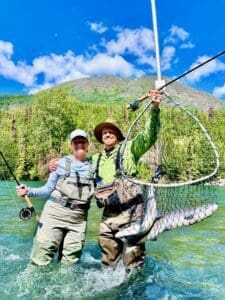

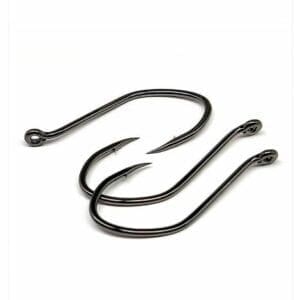
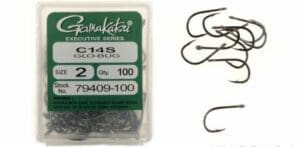
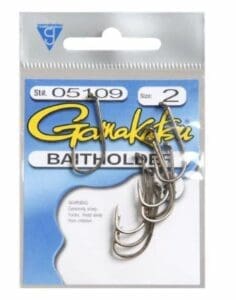
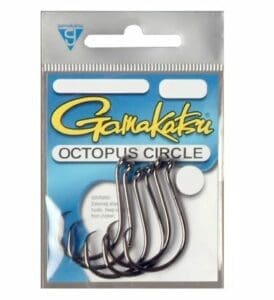
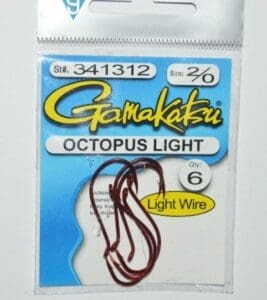
0 Comments